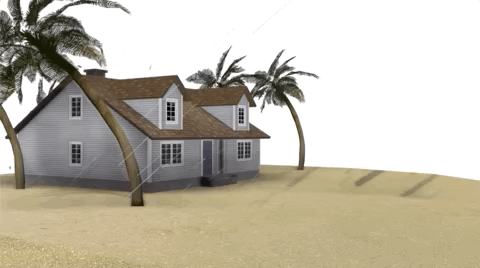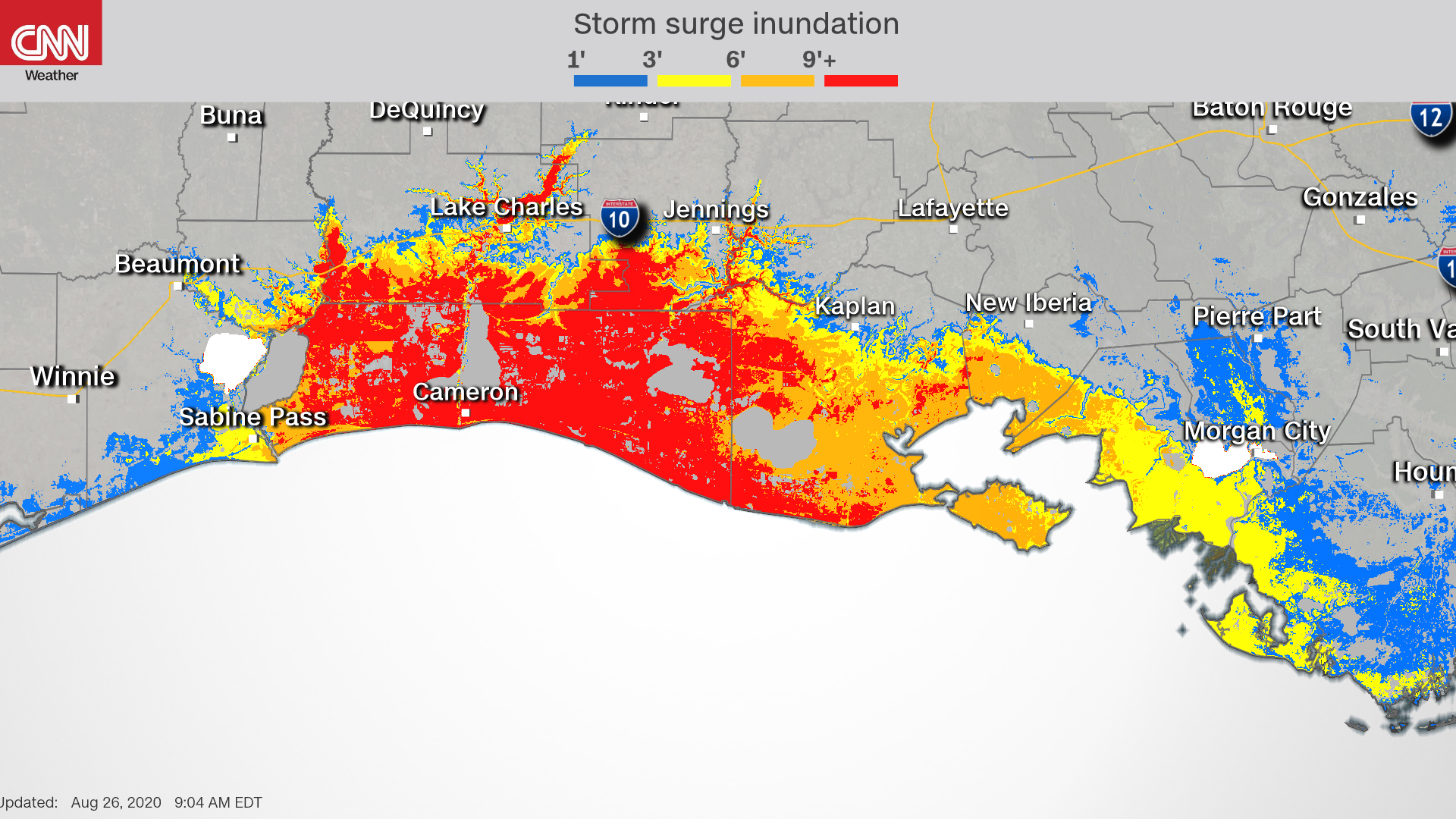As the Category 3 storm barrels toward land, the National Hurricane Center says only a few hours remain to protect life and property
One of the main concerns facing residents on the Gulf Coast is what the National Hurricane Center is calling “potentially catastrophic storm surge.”
Storm surge is the rise in sea level during a big storm. It is measured as the height of the water above what the normal predicted astronomical tide would be. This GIF helps explain it:

Storm Surge warnings ahead of Hurricane Laura: National Hurricane Center forecasters warned of “life-threatening storm surge and hurricane-force winds” for parts of the Gulf Coast.
Storm surge warnings have been issued from Freeport, Texas, to the mouth of the Mississippi River.
Storm surge warnings are issued when there is a danger of life-threatening inundation, from rising water moving inland from the coastline during the next 36 hours, the National Hurricane Center says.

Surge is already beginning and will continue to get higher the closer to landfall. Here are the surge forecast heights:
- 10 to 15 feet storm surge for Sea Rim State Park to Intracoastal City; Beaumont and Port Arthur, Texas and Lake Charles, Louisiana
- 8 to 12 feet storm surge for Intracoastal City to Morgan City including Vermilion Bay
- 4 to 7 feet storm surge for Morgan City, Louisiana to the Mouth of the Mississippi River
- 3 to 5 feet storm surge for San Luis Pass to Port Bolivar, Texas including Galveston Bay
Storm surge is not just a concern for coastal cities: “This storm surge could penetrate up to 30 miles inland from the immediate coastline in southwestern Louisiana and far southeastern Texas,” the National Hurricane Center said.
This means it could even approach I-10 near Lake Charles, Louisiana.
Even for a city as far away as New Orleans, the metro area is forecast to have a storm surge between 2 and 4 feet.
New Orleans is especially at risk because it is essentially shaped like a bowl. Thanks to the drainage system they have set up, the city can act like a colander allowing water to flow out. Still, when it rains a lot in a short period of time, the drainage system can become overwhelmed, and that colander acts more like a bowl and floods the city.
![]()


